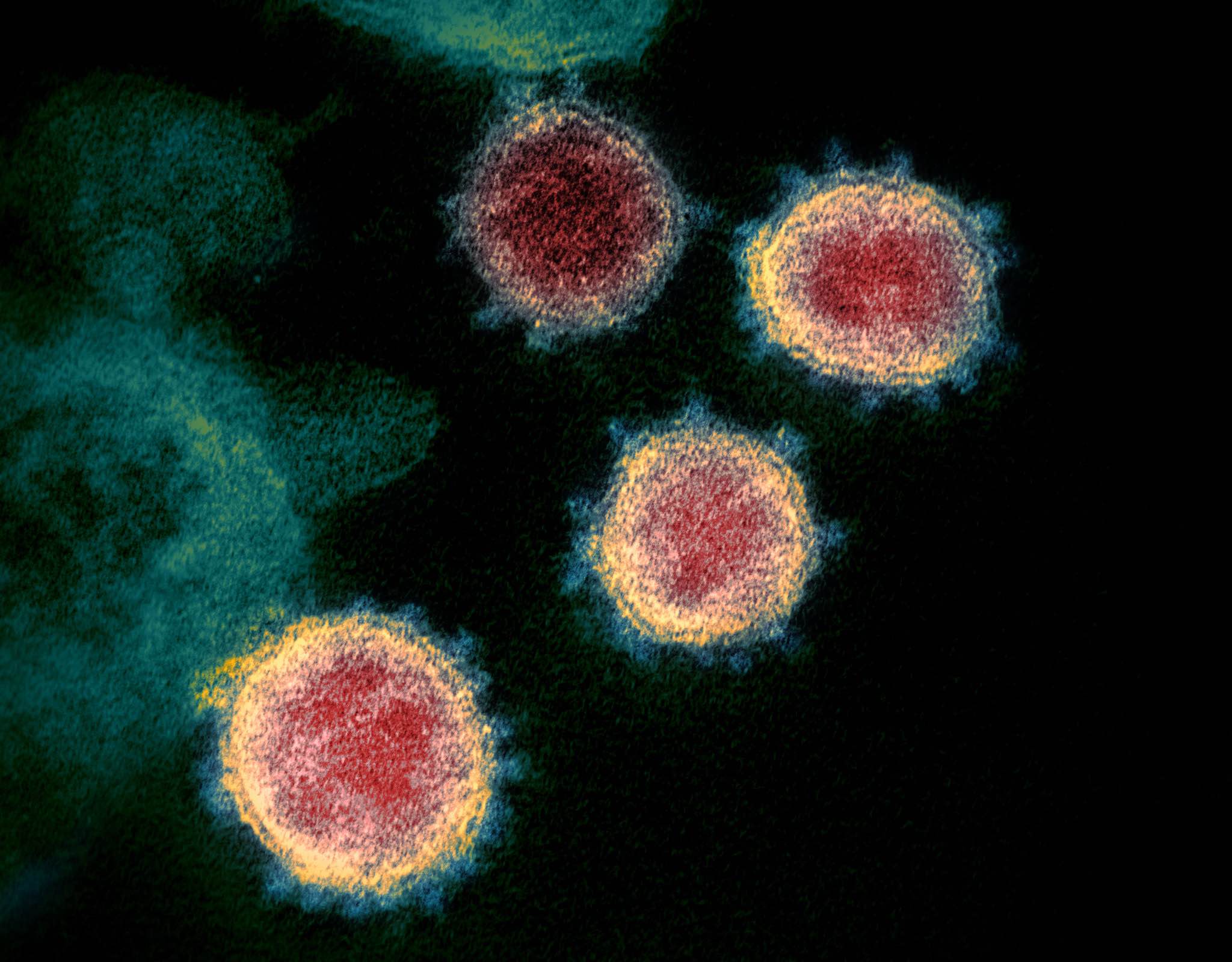xīnguān (xīn·guān new · {hat → [corona]} → [novel coronavirus (esp. SARS-CoV-2, the virus that causes COVID-19)] 新冠) ← Tap/click to show/hide the “flashcard”
[Note: Tap/click on a Pīnyīn (Pīn·yīn {Piecing Together} · Sounds → [Pinyin] 拼音) expression to reveal its “flashcard”, tap/click on a “flashcard” or its Pīnyīn (Pīn·yīn {Piecing Together} · Sounds → [Pinyin] 拼音) expression to hide the “flashcard”.]
As of this writing, deep in the year 2021, the subject of the COVID-19 pandemic has been, to say the least, on people’s minds now for a while. So, it would be good to be able to refer to things related to it in Mandarin when speaking to people in the Mandarin field, or when speaking to our brothers and sisters in the truth.

An electron microscope image of SARS-CoV-2—also known as 2019-nCoV, the virus that causes COVID-19
NIAID
The Short and the Long of It
This week’s MEotW, “xīnguān (xīn·guān new · {hat → [corona]} → [novel coronavirus (esp. SARS-CoV-2, the virus that causes COVID-19)] 新冠)”, is an abbreviation for “xīnguān bìngdú ((xīn·guān new · {hat → [corona]} 新冠) (bìng·dú disease · poison → [virus] 病毒) → [novel coronavirus (esp. SARS-CoV-2, the virus that causes COVID-19)])”.
It doesn’t end there, though, because “xīnguān (xīn·guān new · {hat → [corona]} → [novel coronavirus (esp. SARS-CoV-2, the virus that causes COVID-19)] 新冠)” and “xīnguān bìngdú ((xīn·guān new · {hat → [corona]} 新冠) (bìng·dú disease · poison → [virus] 病毒) → [novel coronavirus (esp. SARS-CoV-2, the virus that causes COVID-19)])” are both abbreviations for “xīnxíng guānzhuàng bìngdú ((xīn·xíng new · {mould → [type]} 新型) (guān·zhuàng {hat → [corona]} · shape 冠状 冠狀) (bìng·dú disease · poison → [virus] 病毒) → [novel coronavirus (esp. SARS-CoV-2, the virus that causes COVID-19)])”.
To form “xīnguān (xīn·guān new · {hat → [corona]} → [novel coronavirus (esp. SARS-CoV-2, the virus that causes COVID-19)] 新冠)” from “xīnxíng guānzhuàng bìngdú ((xīn·xíng new · {mould → [type]} 新型) (guān·zhuàng {hat → [corona]} · shape 冠状 冠狀) (bìng·dú disease · poison → [virus] 病毒) → [novel coronavirus (esp. SARS-CoV-2, the virus that causes COVID-19)])”, “xīn (new 新)” was taken from “xīnxíng (xīn·xíng new · {mould → [type]} 新型)”, and “guān (hat → [corona] 冠)” was taken from “guānzhuàng (guān·zhuàng {hat → [corona]} · shape 冠状 冠狀)”.
Aren’t you glad you don’t have to go around saying “xīnxíng guānzhuàng bìngdú ((xīn·xíng new · {mould → [type]} 新型) (guān·zhuàng {hat → [corona]} · shape 冠状 冠狀) (bìng·dú disease · poison → [virus] 病毒) → [novel coronavirus (esp. SARS-CoV-2, the virus that causes COVID-19)])” all the time?
One reply on “xīnguān”
[…] the virus that causes COVID-19) (abbr. for xīnxíng guānzhuàng bìngdú)] 新冠)” (a previous MEotW), which is an abbreviation for the mouthful that is “xīnxíng guānzhuàng bìngdú […]